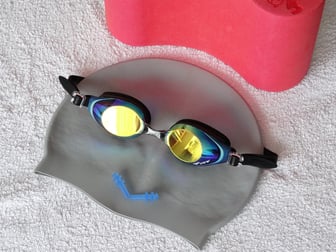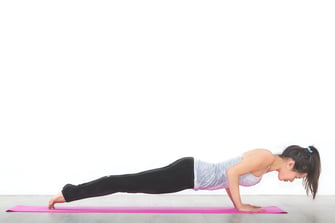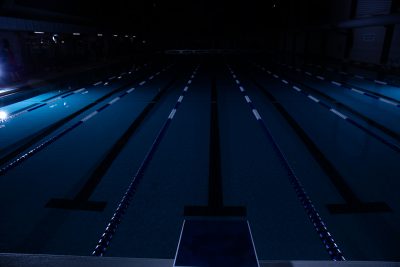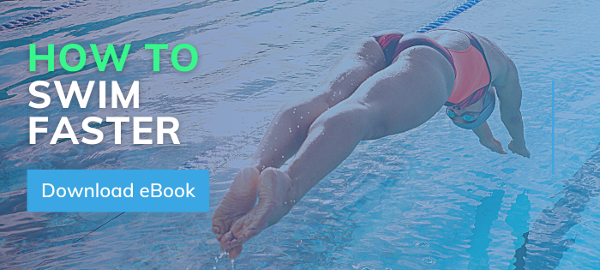One of the toughest parts of being a swimmer is the early morning training sessions. Working up the motivation to force yourself out of bed before sunrise day after day to jump into a cold pool and push your body to its limit for two hours is no easy feat.
It’s quite typical for high school swimmers to wake up before 5 am to make it to practice on time, and some need to drag themselves out of the house at even more horrifying hours. That’s not easy, considering studies have shown teenagers need at least 8 – 10 hours of sleep per night.
However, there are certain steps you can take to make your early morning swim practice routine a little more bearable. Check out this survival guide to help you conquer early mornings and arrive at practice motivated and energized.
Step 1: Prepare the night before

Encourage your night-self to do your morning-self a favour by making it as easy as possible to get ready in the morning.
Pack your bag the night before, lay out your clothes for the next day, and get your breakfast assembled before hitting your pillow. It’s much easier to accomplish these simple tasks at night than it is after waking up, when you’re groggy and sour.
You’ll appreciate the ease of rolling out of bed and having everything prepared before you leave for the pool.
Step 2: Turn off electronics early

Exposure to light promotes wakefulness, and studies have shown that even the light emitted from small screens has the same effect.
Devices like phones, tablets, and laptops emit light of many colours, but blue light is the most harmful because it prevents the release of melatonin, a hormone that lowers alertness and induces sleepiness.
By scrolling an Instagram feed right before going to bed, you’re actually posing a danger to your sleep. While it’s tempting to catch up with social media after climbing in bed, resist the urge to stare at a screen. Find an activity that doesn’t require light shining directly into your eyes, and you’re more likely to have a restful night’s sleep.
Step 3: Use the Sleep Cycle app

Sleep Cycle, an app that monitors your sleep and wakes you up at an optimal time, is available for iOS and Android. It’s very simple to use: before going to bed, set the latest time you want to wake up, and then set a window of time that you might be woken before then.
When it’s time you sleep, you simply place your phone on the corner of your bed so that the accelerometer can track your movements throughout the night. The app recognizes when you are in deep, REM sleep, and when you’re restless.
During your “wake up window” in the morning, the app determines whether it should wake you up immediately before you drift into deeper sleep, or let you sleep longer until you’re in lighter sleep. The alarm triggers at the optimal time to wake you up. It also creates a nice graph to show your sleep cycle and can track other metrics. There are a nice selection of peaceful sounds to wake up to.
The only downside is that you might wake up much earlier than you need to; this is the price to pay for avoiding the gut-wrenching feeling of being jolted from sleep when your basic alarm blares in the middle of a REM cycle.
Step 4: Eat something light

By the time you wake up in the morning, your body is already starving. You need to fuel it before beginning an intense workout, or your body will begin to use muscle tissue as an energy source.
There are an alarming number of age group swimmers who claim they can’t eat anything before morning practice.
While the idea of a full-course, heavy breakfast might not seem appealing in the early hours of the morning, you need to find something to eat that works for you. Some suggestions for a light and easy breakfast are a banana, a slice of toast with peanut butter, or some yogurt with granola. Give your body the fuel it needs before pushing it to the limits!
Step 5: Drink lots of water

As you sleep, your body becomes increasingly more dehydrated. Therefore, drinking a large glass of water is one of the best things you can do after you wake up. Water fuels your brain, jump starts your metabolism, and helps to flush out the toxins that have accumulated in your body over the course of the night.
It is vital to begin drinking water before you start training, so that you can hydrate before you begin to lose water again. Start drinking water when you wake up and stay on top of your hydration as the morning progresses.
Step 6: Take caffeine

As long as you’re hydrating with water, coffee can be a good aid to your morning routine. However, you don’t need a venti Starbucks espresso to enjoy the effects of caffeine.
A small amount goes a long way; studies have shown that 100 milligrams of the stimulant will improve your mood.
Caffeine can be useful if used in moderation, but remember that it is a drug, and too great a dose can make you jittery and cause anxiousness.
I found that even a few sips of coffee in the morning before practice would create an immediate body response, as my system would anticipate stimulation. Perhaps this was all psychological, but it had the desired effect of improving my mood and my alertness.
Step 7: Listen to music

Having a playlist ready to go can also boost your mood and make the early morning more tolerable. Choose music that will give you a lift and help you get out of the house with some spark.
For some people, calm and mellow tunes are the answer. Other people need heavy-hitting beats to pump them up before a workout.
Figure out what works for you and create a playlist that will help you get from the bed to the pool.
Step 8: Wake up your body

Don’t wait for that initial shock of hitting the water to wake up your body – energize yourself in advance so that you’re fully prepared when you dive in for warm up.
Dynamic stretching is a great way to loosen up your muscles and get your body moving. Arm and leg swings are simple yet effective, and doing a few jumps will get your blood flowing.
It’s also a good idea to activate your muscles with some basic dryland exercises like pull-ups and squats. Engage your core with a few controlled leg raises and take some deep breaths before diving in.
Step 9: Hit the water with determination

While you’re waking up your body, don’t forget to activate your mind as well. Briefly revisit your goals before you start the practice to get your head in gear and remind yourself why you’re on a pool deck instead of in your bed.
Rather than flopping into the pool like a dead fish, dive in with some determination and make your first stroke a powerful, efficient one. Starting practice on the right note will increase your chances of having a successful training session.
Step 10: Think about how much you’re accomplishing while most people are sleeping

It’s a good feeling to finish morning practice knowing you’ve already put in hours of hard work before most people have left their beds.
When you’re in the middle of a tough training session in the morning, think about how accomplished you’ll feel when you reach the end.
Swimming multiple kilometers while it’s still dark outside is a triumph in productivity – don’t forget this as you push your body in the early morning hours. Also savour the opportunity to watch the sun rise as you swim! Before you know it, you’ll be on with your day, feeling confident and accomplished.




.png)


.png)